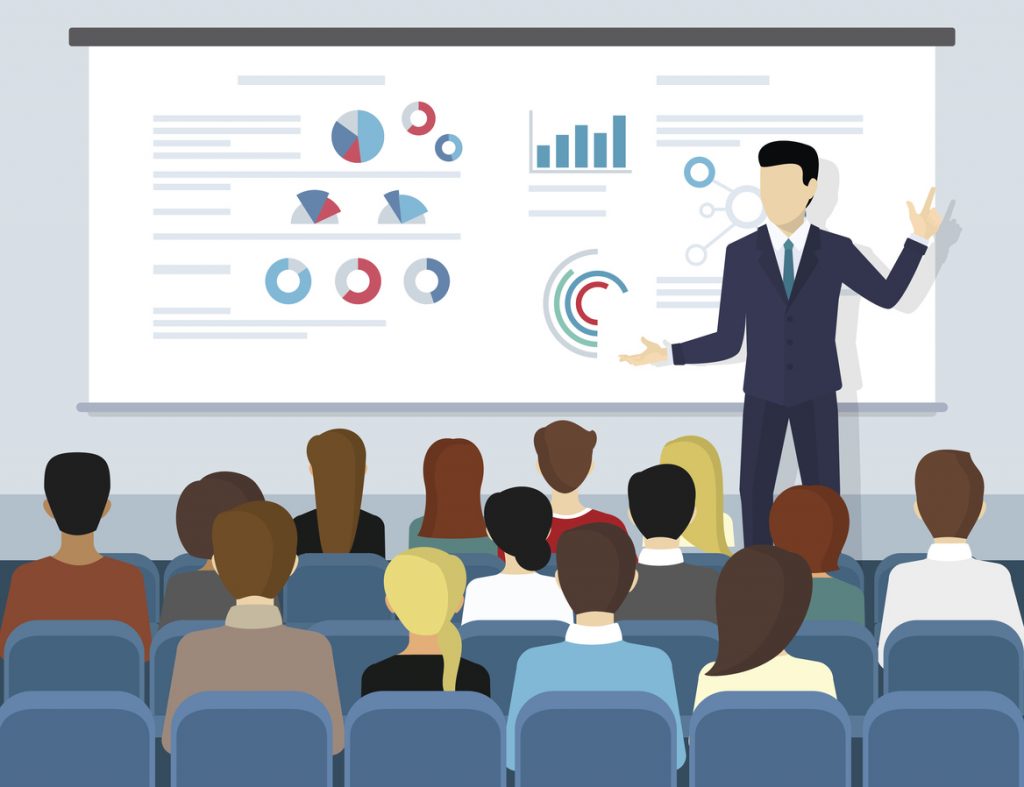
Oral Presentations
Oral presentations take place at the event's location. The presenter is physically present to give the audience a verbal presentation. The majority of presenters choose to use a sequence of slides to augment their remarks.
How to Use Slides Effectively
We strongly advise presenters to think strategically about their slide presentations. The following are some of the best practices:
- Keep the number of words on each slide to the minimum.
- Avoid reading directly off the slides.
- Use the slides to provide the most basic information, while communicating your content verbally, engaging in eye contact with the audience is also important.
- Use large fonts to make it easier for audience to read each slides.
- Make use of visual aids such as photos, graphs, charts to attract the audience attention.
- Design the slides in a way that it does not distract the audience from the presentation (this includes fonts, colors, and how the slides are organized)

How to prepare for your presentation
While the quality of the information you deliver is important, how you present it will determine whether or not the audience engages with it in the way you intend. Here are some pointers to consider as you prepare for your presentation:
- Prepare your presentation as if it were a story you wanted to tell the audience. How much background information should you give in order to set up the presentation's context? How can you move from one element of the story to the next in a natural way? What is your story's central theme? The most fascinating stories are those that are presented with zeal, ones that surprise the audience.
- Make smart use of visual aids. You don't want the audience to be distracted from what you're saying, so carefully consider the relevance of each visual aid, whether it's a slide or an image, to the story you're presenting.
- It is said that practice makes perfect. A truly compelling presentation, as any great presenter knows, necessitates rehearsing. It's a form of art, and it should be cultivated as such. Practice your presentation at least three to four times before the big day.
- Make good use of your time. Given the length of time you've spent with the audience, it's understandable that you'd want to provide as much information as possible. Manage your time, however, in a strategic manner. Months (if not years) of research will almost certainly not fit into 20-30 minutes of presenting time. Instead, concentrate on the most important aspects. Keep track of your time and make sure your presentation meets the event's deadlines.
- Get to your results as soon as possible. Yes, it is critical to provide context for your findings, such as a backdrop, a brief explanation of the technique, and so on. However, if you wait too long to publish the results of your research, you risk losing the audience's attention.
- Avoid using jargon. Keep in mind that the audience is made up of people with a wide range of educational backgrounds. To make your presentation as accessible as possible, avoid using technical words unless absolutely necessary.
- Put on a nice outfit. Make sure your outfit does not distract the audience from the topic of your presentation, just as you don't want superfluous visuals to distract the audience from the subject of your presentation.

Presentation preparation checklist
- Submit the final copy of the presentation by the deadline given to you by the organizers
- Be on-site and available at least 30 minutes before your presentation
- Have a copy of your presentation on a USB device
- Ensure your presentation is compatible with a Windows operating system. Should your presentation require any specific technical set-up (e.g.different operating system), contact the organizers with your needs and make sure you get a confirmation that the needs can be accommodated
- Label the presentation on your device with your name, presentation day, and time.
Please note that technical issues may arise on-site before, during, or after your presentation. While the organizing committee goes above and beyond to make sure this doesn’t happen, in the event that it does, the organizing committee can not be held responsible.
Technical assistance
For your presentation you will be provided with the following equipment:
- A laptop
- A projector
- A smart pointer
- Technical assistants on-site


